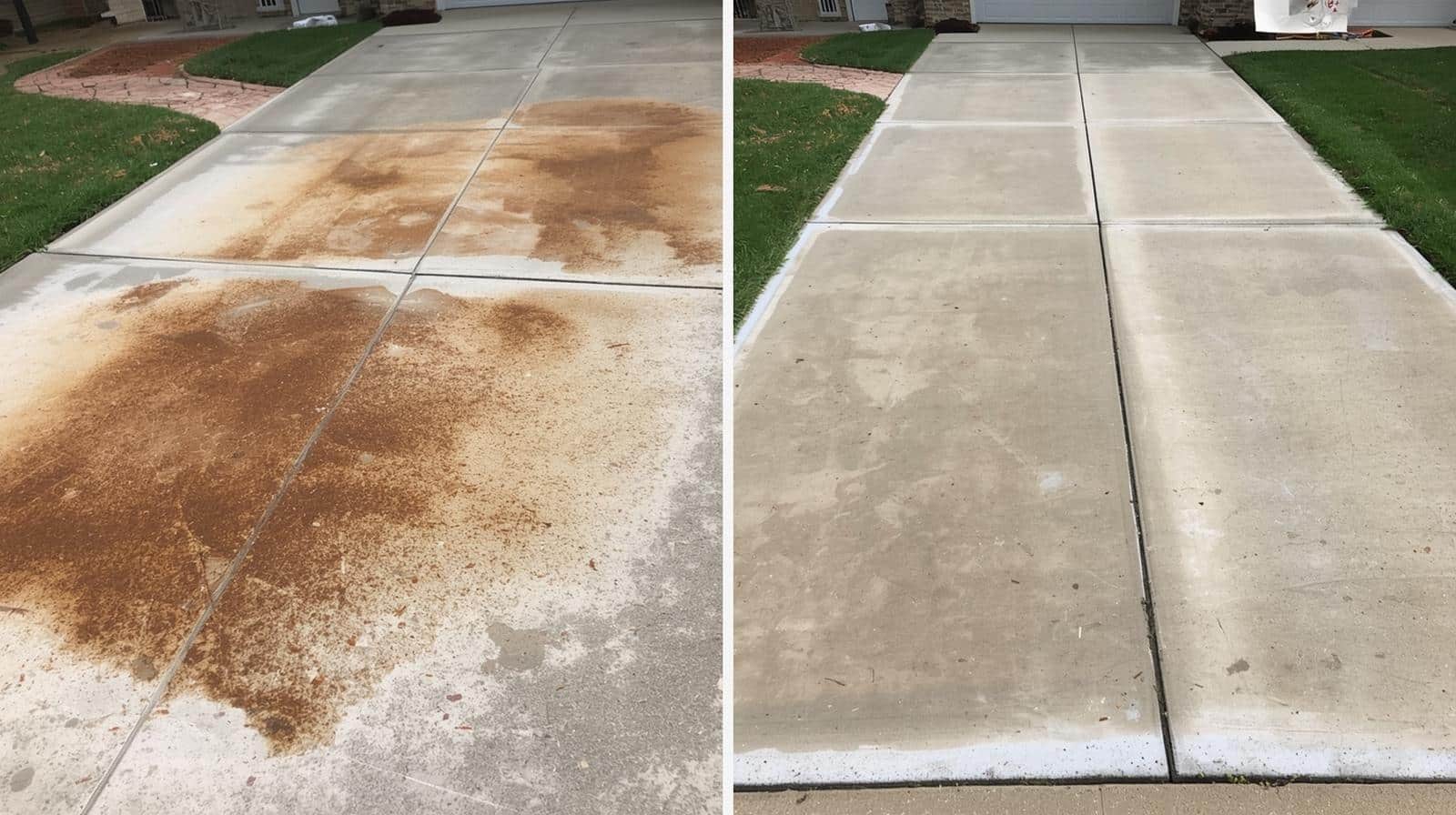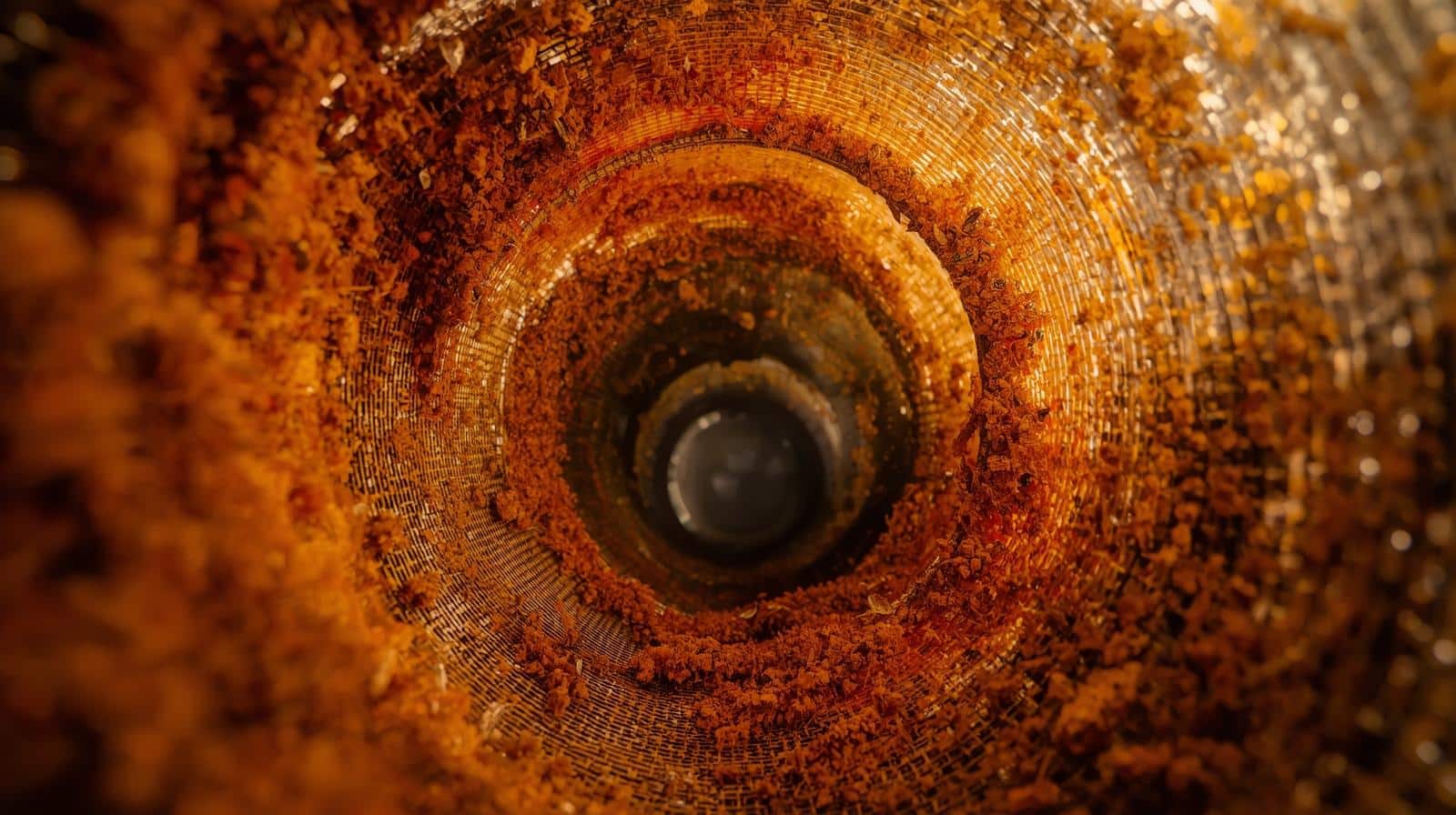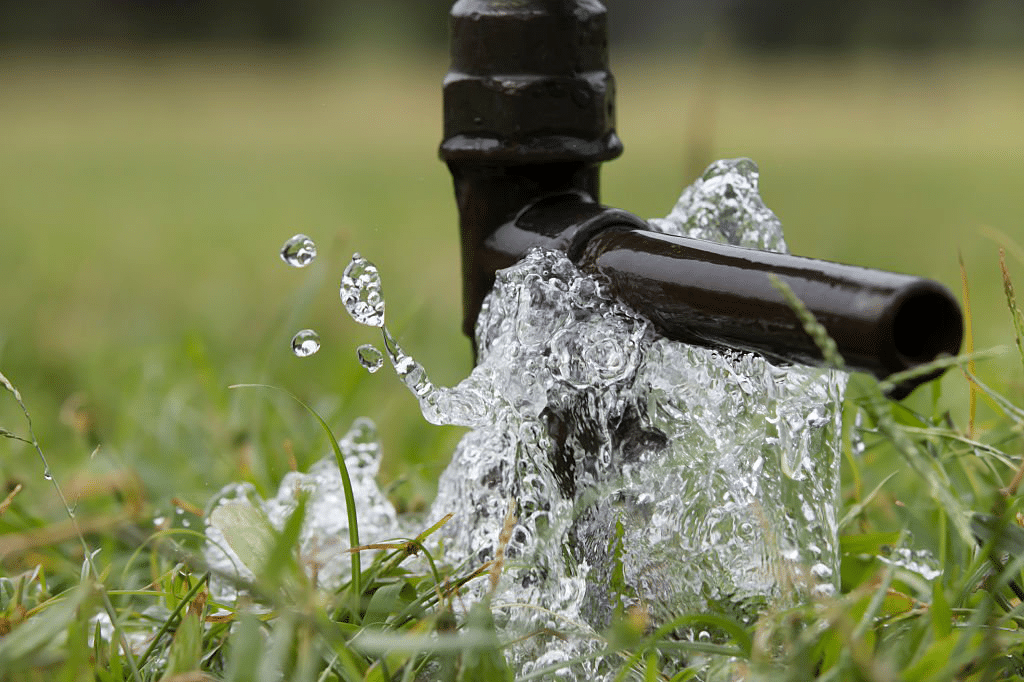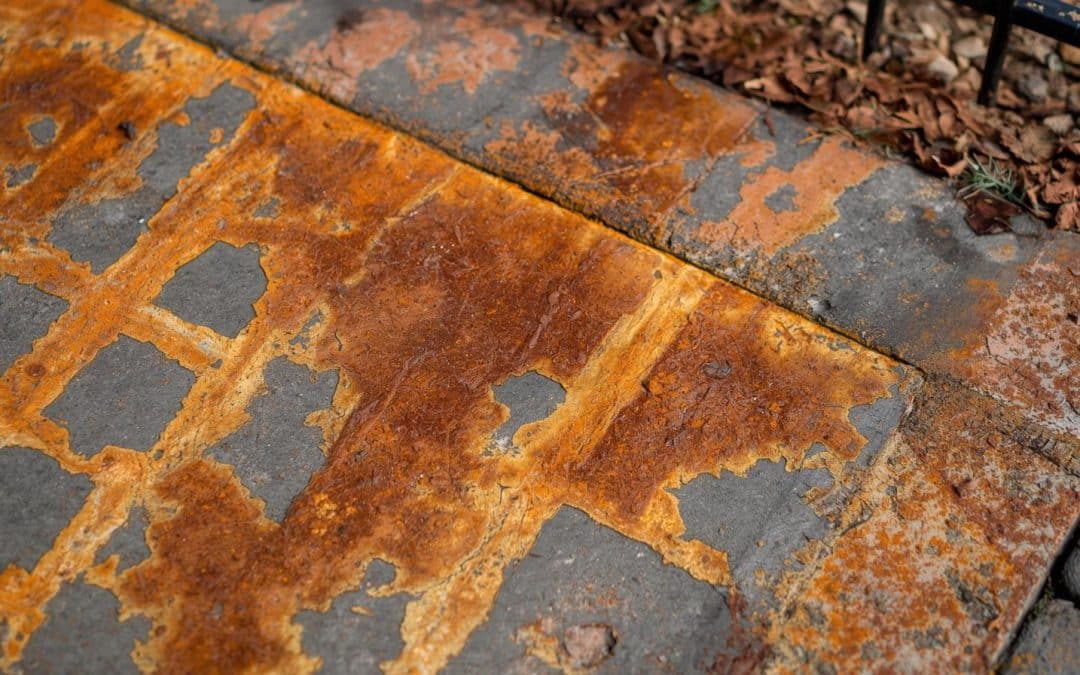Bore water stains are caused by iron oxide deposits left when iron-rich groundwater evaporates on surfaces. Effective bore water stain removal requires different approaches for porous surfaces (concrete, brick, pavers) versus non-porous surfaces (glass, metal, PVC), with biodegradable commercial products like X-Fe and X-Fe Forte offering superior results compared to DIY solutions while preventing surface damage.
Orange-brown stains spreading across your driveway, fence, or patio aren’t just unsightly—they’re evidence of iron-rich bore water leaving permanent marks on your property. If you’re dealing with stubborn rust-coloured staining from your irrigation system, you’re not alone. Across iron-rich regions of Australia, particularly Western Australia, Queensland, and South Australia, bore water stain removal is a constant maintenance challenge for homeowners, councils, and commercial properties.

Understanding why these stains form and choosing the right removal method for your specific surface type can save you thousands in replacement costs. This comprehensive guide covers everything you need to know about effective bore water stain removal for Australian conditions.
Understanding Bore Water Stains
Bore water stains are more than cosmetic nuisances. Understanding their formation helps you choose the most effective removal strategy and prevent recurrence.
What Causes Orange-Brown Staining
Bore water staining occurs when iron-rich groundwater from underground aquifers is pumped to the surface for irrigation. Groundwater in iron ore-rich geological formations contains dissolved ferrous iron (Fe²⁺) and sometimes manganese. When this water contacts oxygen during pumping and spraying, a chemical reaction occurs.
The dissolved iron oxidizes, transforming from soluble ferrous iron into insoluble ferric iron (Fe³⁺), which forms iron oxide—commonly known as rust. As the water evaporates from surfaces, it leaves behind these iron oxide deposits. Over time, repeated irrigation cycles build up layers of rust staining that bond strongly with surface materials.
Why Western Australia and Iron-Rich Regions Are Most Affected
Western Australia experiences particularly severe bore water staining due to its unique geological composition. The state sits atop some of the world’s richest iron ore deposits, with groundwater naturally containing elevated iron levels. Regional iron prevalence varies significantly across WA, SA, QLD, and parts of NSW and VIC, with groundwater drawing through iron-rich rock formations.
Australia’s hot, dry summers cause rapid water evaporation, concentrating iron deposits on surfaces before they can be rinsed away. Properties using bore water for regular irrigation face continuous staining cycles, with iron levels above 0.3 mg/L typically causing visible staining issues.
Porous vs Non-Porous Surfaces
Different surface materials interact with iron oxide in distinct ways, requiring tailored bore water stain removal approaches.
Porous Surfaces (Concrete, Brick, Pavers, Render)
Porous materials pose the greatest stain removal challenge because they absorb iron-laden water deep into their structure. Concrete’s porous structure allows iron-rich water to penetrate several millimeters deep. Standard concrete has a pH of 12-13 (highly alkaline), which attracts and bonds with iron particles. Clay bricks are highly porous, absorbing bore water readily, with iron oxide stains penetrating brick faces and mortar joints. Rendered surfaces and natural stone pavers are extremely porous and delicate, requiring gentle treatment.

Bore water cleaners designed for porous surfaces must penetrate deep to dissolve embedded iron, not just surface deposits.
Non-Porous Surfaces (Glass, Metal, PVC, Stainless Steel)
Non-porous surfaces don’t absorb water, so iron oxide deposits remain on the surface. While generally easier to clean, these materials still require appropriate products to avoid damage. Glass shows bore water stains as crusty, orange-brown deposits that obscure transparency. Colorbond fencing, galvanized steel, and powder-coated metal surfaces develop surface iron staining. White PVC irrigation pipes, fittings, and poly tanks show orange iron staining prominently. Even stainless steel can develop surface iron staining from bore water.
Effective Bore Water Stain Removal Methods
Choosing the right bore water stain removal method depends on surface type, stain severity, and desired results.
X-Fe and X-Fe Forte: Purpose-Designed Solutions
Commercial bore water stain removers offer superior results through specialized chemistry targeting iron oxide dissolution.
X-Fe for Non-Porous Surfaces
X-Fe is formulated specifically for non-porous surfaces including glass, stainless steel, PVC, metal fencing, glazed tiles, and painted surfaces. Its chemistry dissolves iron precipitates without damaging underlying materials.
Application: Spray X-Fe directly onto stained surfaces, allow 5-10 minutes contact time for the formula to dissolve iron oxide, agitate with a soft brush or cloth if needed, rinse thoroughly with clean water.
Best for: Windows, glass pool fencing, Colorbond fencing, stainless steel fixtures, PVC pipes and fittings, metal gates and railings, glazed tiles.

X-Fe Forte for Porous Surfaces
X-Fe Forte features enhanced penetrating agents designed to reach iron deposits deep within porous materials. It dissolves iron oxide embedded in concrete, brick, pavers, render, and natural stone.
Application: Apply X-Fe Forte generously to porous stained surfaces, allow 10-15 minutes contact time for deep penetration and iron dissolution, scrub with a stiff brush to agitate loosened iron deposits, rinse thoroughly, repeat if necessary for heavy staining.
Best for: Concrete driveways and paths, brick pavers and walls, rendered surfaces, exposed aggregate concrete, sandstone and natural stone, unglazed tiles, grout.
Why Commercial Products Outperform DIY Solutions
Commercial bore water stain removers are specifically formulated to address the unique chemistry of iron oxide bonding. They contain chelating agents that bind iron ions and break mineral bonds, penetrating surfactants for porous surface treatment, pH-balanced formulations preventing surface damage, biodegradable components meeting environmental standards, and controlled concentrations optimized for safety and effectiveness.
Australian-made formulations like X-Fe and X-Fe Forte have been proven effective for over 30 years across WA, QLD, SA, NSW, VIC, and NT—regions where iron fouling is endemic.
Preventing Future Bore Water Stains
Prevention is more cost-effective than repeated stain removal. Implementing preventive measures reduces staining frequency and severity.
Filtration and Water Treatment
Iron Removal Filters

Installing filtration systems at the bore water source removes iron before it reaches irrigation systems and surfaces. Specialized iron removal filters use oxidation and filtration media to remove dissolved iron from bore water before distribution. These systems oxidize dissolved ferrous iron to ferric iron, then trap the precipitated iron oxide in filter media. Regular backwashing removes accumulated iron, and filter media requires periodic replacement.
While filtration systems represent significant upfront investment, they eliminate ongoing stain removal costs, reduce water treatment expenses, protect irrigation equipment from iron buildup, and improve water quality for all uses.
Best for: Properties with high bore water usage, commercial facilities, councils and parks, properties where aesthetics are critical, locations with very high groundwater iron levels.
Restore Your Property’s Appearance with Effective Stain Removal
Bore water stains don’t have to permanently mar your property’s appearance. With the right bore water stain removal approach matched to your surface type and stain severity, you can restore concrete, pavers, brick, fencing, and glass to their original condition. Understanding the difference between porous and non-porous surfaces and selecting appropriate products ensures successful results without surface damage.

Biodegradable, Australian-made solutions specifically formulated for bore water iron staining deliver superior results compared to generic household products. X-Fe and X-Fe Forte have been trusted for over 30 years across Western Australia, Queensland, South Australia, New South Wales, Victoria, and the Northern Territory, providing proven performance in Australia’s most challenging iron-rich groundwater conditions.
Don’t let accumulated iron staining reduce your property’s value and appearance. Explore the complete range of Clearbore stain removal products designed specifically for Australian bore water conditions. Contact our technical team for product recommendations tailored to your specific surfaces and staining severity. Clean surfaces start with the right solution—take action today to restore your property’s appearance.
FREQUENTLY ASKED QUESTIONS
What is the best product to remove bore water stains from concrete?
X-Fe Forte is the most effective product for removing bore water stains from concrete driveways, paths, and pavers. Unlike vinegar or general-purpose cleaners, X-Fe Forte is specifically formulated to penetrate porous concrete and dissolve embedded iron oxide deposits. Apply generously, allow 10-15 minutes contact time, scrub with a stiff brush, and rinse thoroughly. For severe staining, a second application may be necessary. X-Fe Forte’s biodegradable formula won’t damage concrete or surrounding vegetation.
Can I use vinegar to remove bore water stains?
Vinegar can remove very light, fresh bore water stains from non-porous surfaces like glass or metal, but it’s largely ineffective on porous surfaces like concrete, brick, or pavers. The acetic acid in household vinegar (5% concentration) is too weak to dissolve iron oxide that has bonded deeply into porous materials. For established bore water staining, purpose-designed products like X-Fe Forte deliver far better results without requiring multiple applications and hours of scrubbing.
How do I remove bore water stains from glass windows and pool fencing?
For glass surfaces, use X-Fe stain remover formulated for non-porous materials. Spray X-Fe directly onto stained glass, allow 5-10 minutes for the iron oxide to dissolve, wipe with a soft cloth or sponge, and rinse with clean water. X-Fe’s gentle chemistry removes iron stains without scratching or etching glass. For stubborn deposits, a second application may be needed. Avoid abrasive scrubbing pads that can permanently scratch glass surfaces.
What’s the difference between X-Fe and X-Fe Forte?
X-Fe is designed for non-porous surfaces (glass, metal, PVC, stainless steel, glazed tiles) while X-Fe Forte is formulated for porous surfaces (concrete, brick, pavers, render, natural stone). X-Fe Forte contains enhanced penetrating agents that allow it to reach iron deposits deep within porous materials, while X-Fe provides rapid surface iron dissolution without the deep penetration needed for porous materials. Using the correct product for your surface type ensures optimal stain removal without surface damage.
How can I prevent bore water stains from coming back?
Prevent bore water stain recurrence by installing iron removal filtration systems on your bore water supply, applying protective sealers to porous surfaces like concrete and pavers (reapply every 2-3 years), adjusting irrigation sprinkler angles to minimize overspray onto driveways, fencing, and buildings, scheduling annual preventive cleaning before stains become severe, or using scheme water or rainwater for irrigation near buildings and high-visibility areas. Combining sealing with proper irrigation management provides the best long-term stain prevention.

